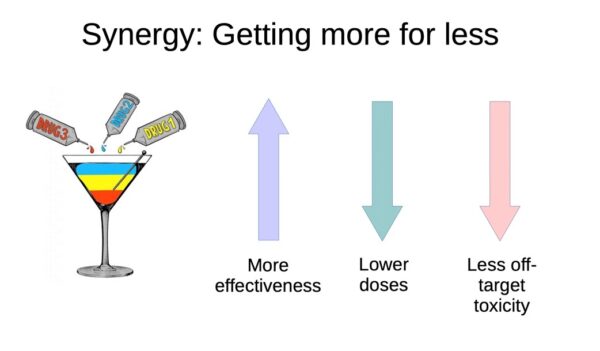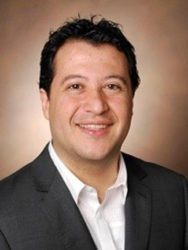By Aaron Conley

The Idea


Pioneering research from Vanderbilt scientists identifies a measurement system for how well medications work together to help researchers devise new combinations of drugs. It also develops an open-source analysis tool to help speed such discoveries around the world.
This research led by Vito Quaranta, professor of biochemistry, and Carlos Lopez, associate professor of biochemistry, was published in Nature Communications on July 29. The findings establish a new way to understand, measure and analyze drug synergy and combination.
Lopez and Quaranta built reliable synergy metrics and a unique algorithm called MuSyC—named in homage to Vanderbilt’s home in the heart of Music City—to simplify the analysis that determines the efficacy and potency of certain drug combinations against cancer and other diseases.
“The MuSyC approach opens the way for systematic screening of drug combination, bordering into AI applications when interfaced with databases of chemical compound structures,” said Quaranta, also director of the Quantitative Systems Biology Center.
Why it Matters
“Drug synergy—or, for that matter, synergy of perturbations to a cell—has been a hotly debated topic for decades,” Lopez said. “Therefore, I believe understanding this process with rigor will accelerate progress in many areas of biological research.”
David Wooten, PhD’18, and Christian Meyer, PhD’20, who both have backgrounds in physics, imagined the MuSyC project and, in an initial publication in the journal Cell Systems, explained that MuSyC has the “potential to transform the enterprise of drug-combination screens.” MuSyC acts by precisely guiding researchers and physicians to combinations of drugs they can prescribe to patients at lower doses, with improved efficacy, or both.
“The theoretical foundations of MuSyC immediately pose the question of whether drug combinations that are currently deployed as standard of care should undergo a process of rethinking and retesting within a rigorous framework that quantitatively measures antagonism and synergism,” Quaranta said. “It is hard to believe, but even some commonly used drug combinations were never measured quantitatively. MuSyC will provide means to perhaps dial down dosages, demising side effects, or even identify unsuspected antagonistic effects.” It is “a small step for a laboratory,” Quaranta continued, but “a big leap for the field of drug combination discovery.”
What’s Next?
“The next step for us will be to implement these methods into user-friendly modeling frameworks and develop tools to link cell response synergy to molecular interactions, thus providing a molecular basis for synergy,” Lopez said.
This research builds a needed foundation and tools for understanding how to best use and develop drug combinations to improve human health.
Funding
This work was supported by the National Science Foundation Graduate Student Fellowship Program award 1445197, National Science Foundation grants MCB 1411482 and CAREER 1942255, and National Institutes of Health grants U54-CA217450, U01-CA215845 and R01-186193.
Go Deeper
The article “MuSyC is a consensus framework that unifies multi-drug synergy metrics for combinatorial drug discovery” was published in Nature Communications on July 29.
Alexander Lubbock, postdoctoral fellow, Wooten and Meyer, both former graduate students in biochemistry, co-authored this work.